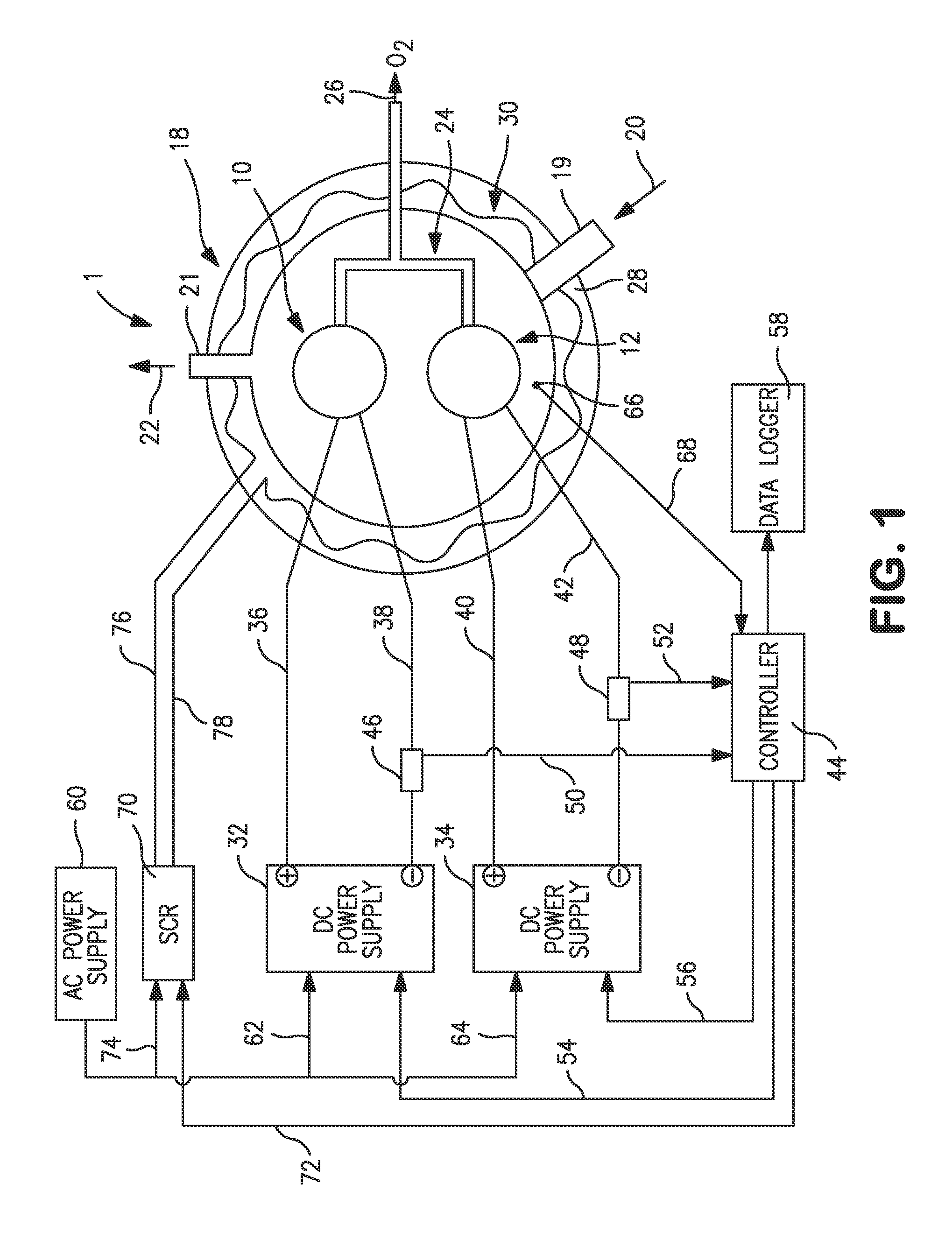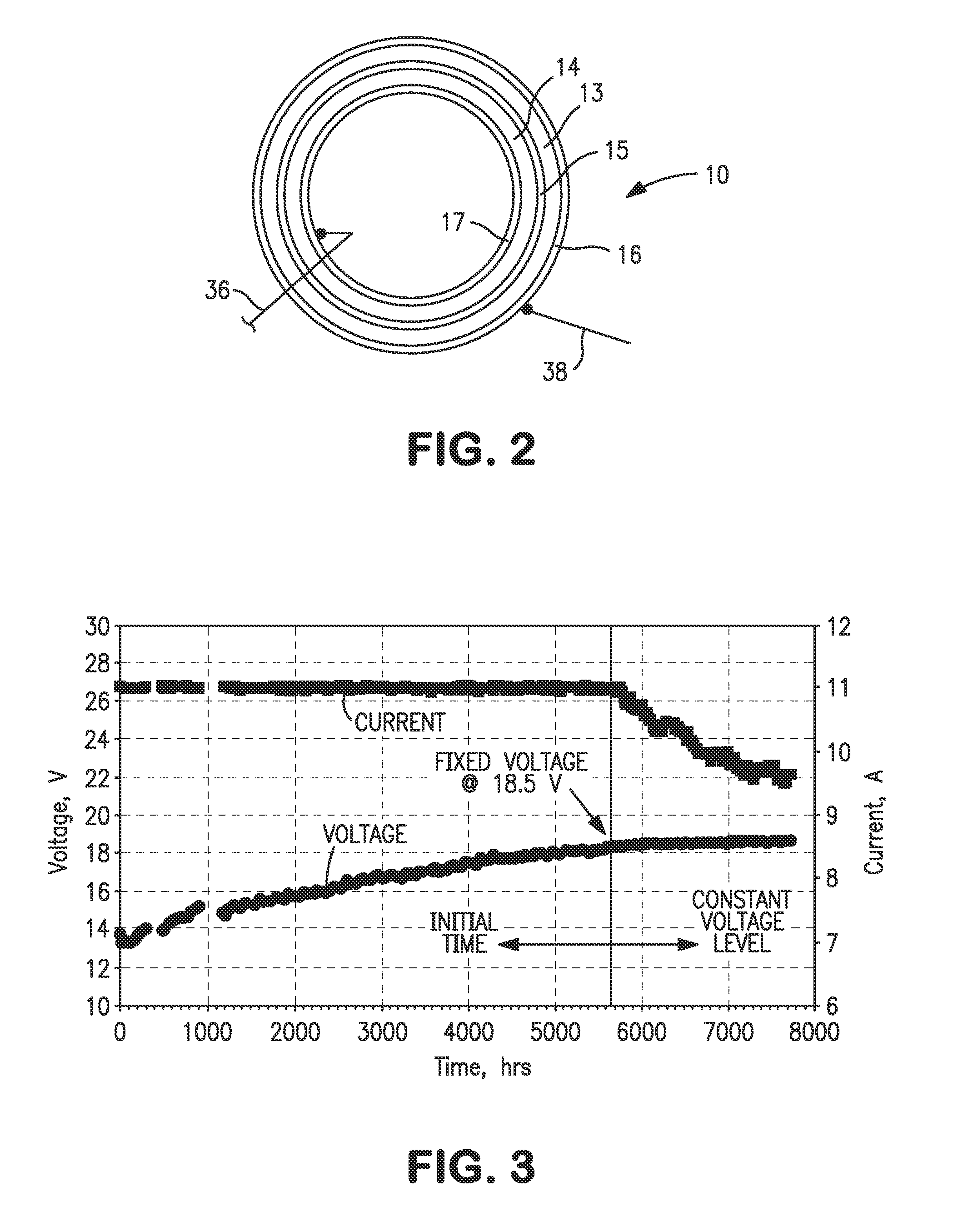Control method and apparatus
a control method and control apparatus technology, applied in the direction of electric supply techniques, electrochemical generators, separation processes, etc., can solve the problems of compound membrane elements and specifically, elements employed in such elements, degrade or age over time, and the voltage will steadily increas
- Summary
- Abstract
- Description
- Claims
- Application Information
AI Technical Summary
Benefits of technology
Problems solved by technology
Method used
Image
Examples
Embodiment Construction
[0020]With reference to FIG. 1, an electrically driven oxygen separation device 1 incorporating an electrical power supply in accordance with the present invention is illustrated. Electrically driven oxygen separation device 1 is illustrating as having a first composite membrane element 10 and a second composite membrane element 12 housed within an electrically heated enclosure 18.
[0021]The electrical power supply to the electrically driven oxygen separation device separation device 1 is illustrated as incorporating two separation zones. One of the two separation zones consists of a DC power supply 32, the first composite membrane element 10, an electrical current sensor 46 and the other of the two separation zones consists of a DC Power Supply 34, the second composite membrane element 12 and a second current sensor 48. Current sensor 46 and 48 could be a current sense resistor or any other current measurement device. Also the current measurement device could be integrated into powe...
PUM
| Property | Measurement | Unit |
|---|---|---|
| Temperature | aaaaa | aaaaa |
| Power | aaaaa | aaaaa |
| Electrical resistance | aaaaa | aaaaa |
Abstract
Description
Claims
Application Information
 Login to View More
Login to View More - R&D
- Intellectual Property
- Life Sciences
- Materials
- Tech Scout
- Unparalleled Data Quality
- Higher Quality Content
- 60% Fewer Hallucinations
Browse by: Latest US Patents, China's latest patents, Technical Efficacy Thesaurus, Application Domain, Technology Topic, Popular Technical Reports.
© 2025 PatSnap. All rights reserved.Legal|Privacy policy|Modern Slavery Act Transparency Statement|Sitemap|About US| Contact US: help@patsnap.com



